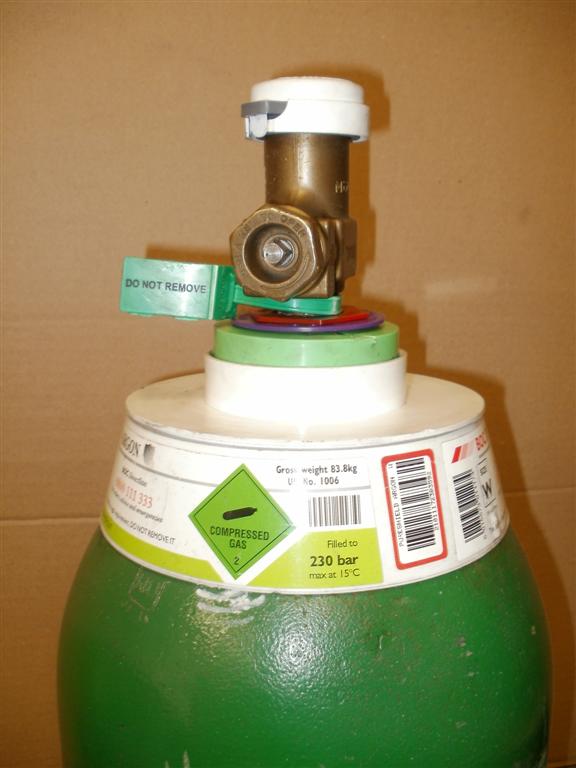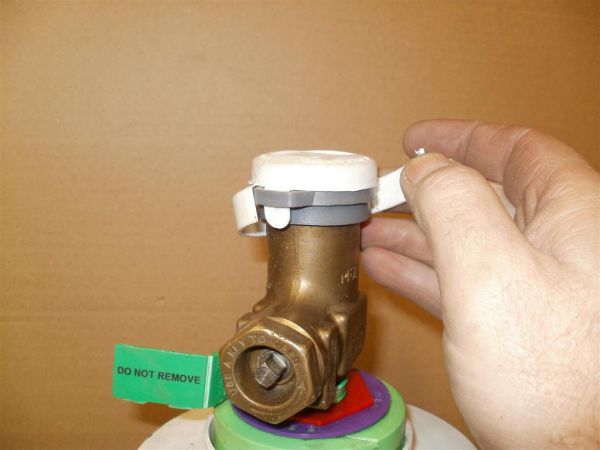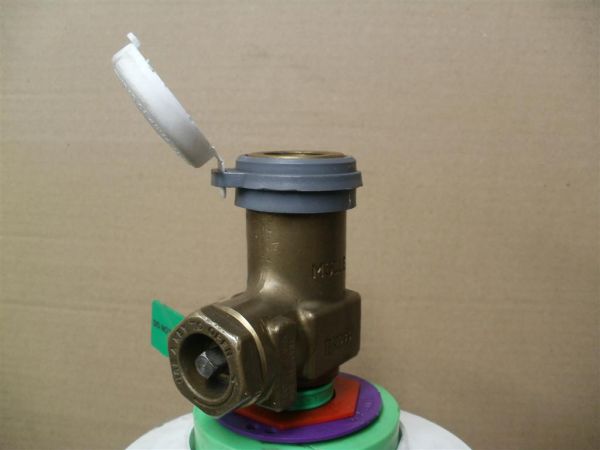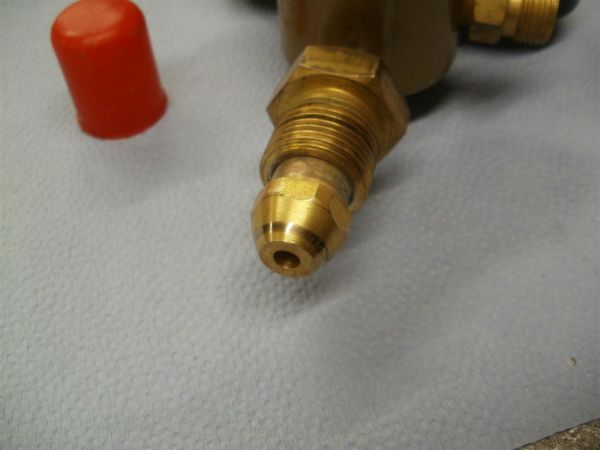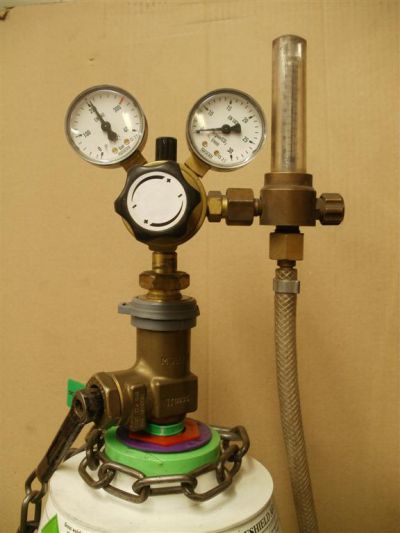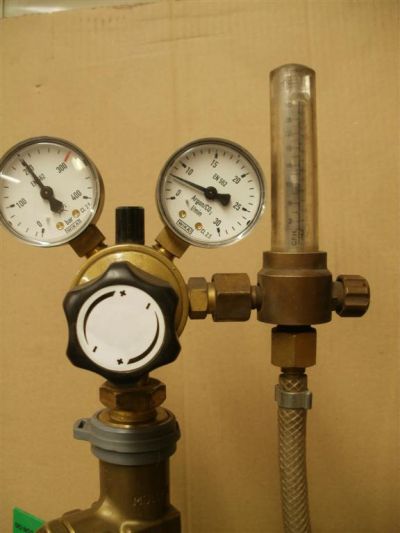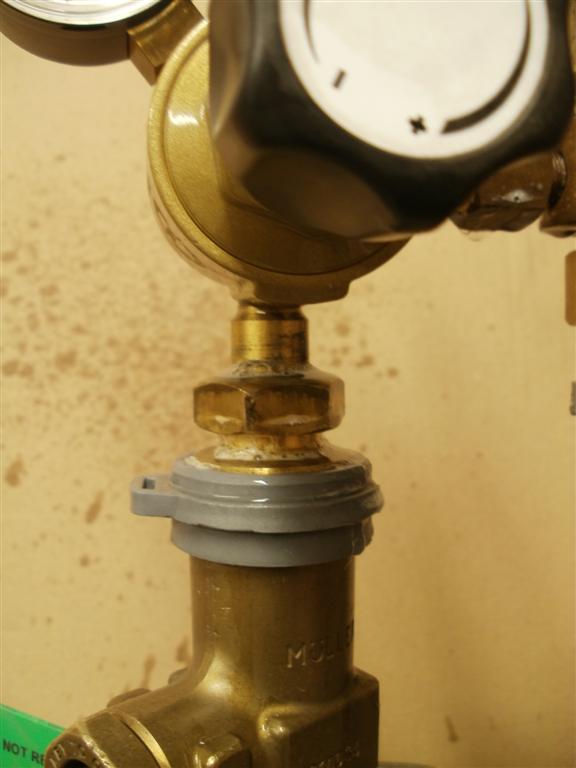Setting up the gas
The question "how do I fit a gas regulator" is often asked by newcomers to welding, the example used here is a conventional industrial BOC Argon cylinder being set up for TIG welding, Argon mix gases for mig welding and oxygen cylinders also use the same fitting. A square spindle key is required to open the valve, these should be available from your cylinder supplier, or welding supplies shop.
Air Products cylinders also use the same size fitting but instead of using a square key the valve has a hand-wheel on the top, and the regulator fits to the side. Gas cylinders should always be secured against falling before working on them.
First remove the plastic protection cap, this has to be destroyed to open it, if you are offered a cylinder without an intact cap, refuse it, its probably been opened or used, or may have been returned as faulty and has found its way back amongst new cylinders.
When the cap is removed, ensure there is no debris or moisture in the threaded valve body, the traditional way of doing this is called "snifting", this is simply opening the valve momentarily to use the gas pressure to clean the valve out, although snifting is still suggested by gas suppliers,the preferred method is to use a compressed air or nitrogen jet where possible, in some organisations snifting is no longer allowed,
Safety note, Always wear eye protection, Where possible snift outdoors, Never snift Hydrogen it can spontaneously combust, never snift toxic gases, keep all parts of the body out of the gas stream, 230 bar (3330 psi) will cause serious injury.
Check the brass bullnose on the regulator for damage, this is the only place where the gas seal is made, any bruising here will cause a leak, minor damage can sometimes be gently polished out with scotchbrite, the dark ring shown on the brass bullnose here shows where the seal is made.
Don't be tempted to use sealers or thread tape, this is particularly important with oxygen as sealants may be oil based which reacts with oxygen and can cause an explosion. when regulators are supplied new the threads and bullnose are protected by the plastic cap shown in the photo, its worth keeping this safe and slipping it on every time the regulator is removed,
Screw the regulator on by hand, then hand tighten the nut and at the same time give the reg a twist to seat it in the valve, make sure you position it to clear the movement of the cylinder key. then tighten it with a correctly fitting spanner, Check that the pressure knob is backed off anticlockwise, fit your gas hose and flowmeter if you have one, then turn on the cylinder valve, nice and gently so as not to shock the regulator, normally only about one quarter turn is enough.
Trigger the welder to open the gas valve and wind the pressure knob in to set the flow rate, if using a flowmeter, open it up fully, set the flow on the reg a bit higher than you need, then fine tune using the flowmeter control knob
Finally check for leaks, major leaks you will probably hear, minor ones are best found using an aerosol leak detector spray available from welding suppliers, a very weak (1%) solution of a neutral detergent such as Teepol can also be used, ordinary washing up liquids may contain oils and fats, so should not be used.
When welding is finished turn off the cylinder valve, and if the cylinder is not going to be used for a while back off the pressure control on the regulator.
